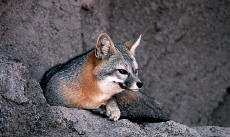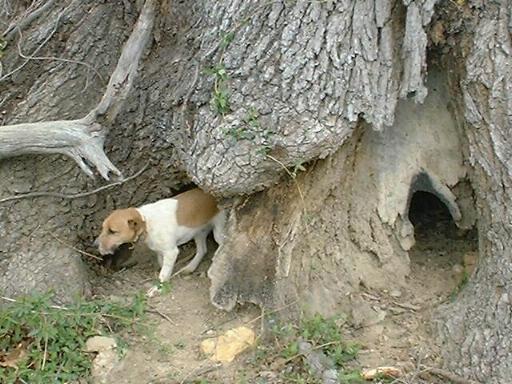|
Gray Fox
While the red fox is normally found in dirt dens located in broken farm country, the native gray fox is normally found in rock dens or in hollow logs and stumps in mountainous forest land. The gray fox is a tiny bit smaller than the red fox, typically weighing in at 7 to 14 pounds, and with a chest of 12 to 13 inches in diameter. The gray fox is grizzle-gray on top and reddish-brown below, with small patches of white fur at the the throat, chest, and around the eyes. The gray fox has a black tipped tale, while the red fox has a white tip -- a definitive way to tell the two species apart. The gray fox is found throughout the eastern United States and in the western states north to northwestern Oregon, central Nevada, and northern Colorado. The range extends southward through Mexico into Central America. Gray fox skull, side and from top.
Like red fox kits, gray fox kits are usually born in March or April after a gestation period of about 59 days. An average litter size is four, and the kits will be weaned between 8 and 10 weeks of age. Juvenile gray fox reach their adult weight at five to six months of age, and will stay with their mother until fall when they split to establish their own territories. Unlike the red fox, the gray fox can easily climb trees, and will often climb if pursued by a dog or coyote. Like the red fox, the gray fox is omnivorous and will eat almost anything it comes across: mice, rats, grasshoppers, crickets, eggs, birds, acorns, berries, and apples.
|

